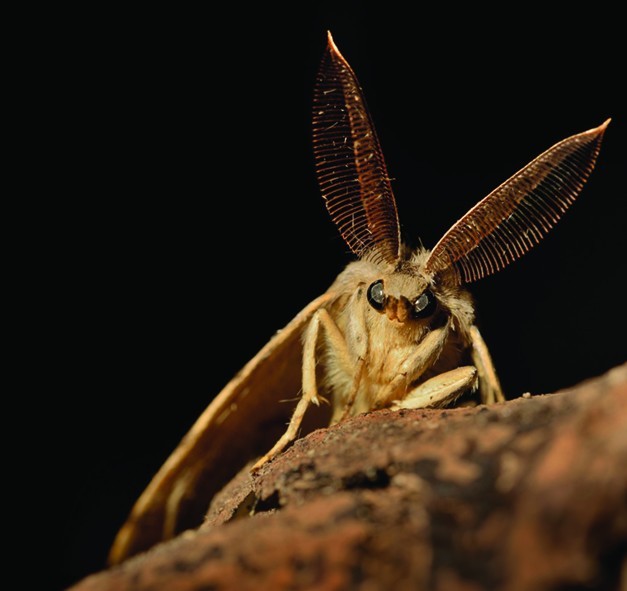Step change in biosecurity tools for urban environment

Urban environments are arguably the toughest battlegrounds in the war for biosecurity. Scion has recently created new concepts and a suite of tools for the busy urban environment.
The team built a portable, lightweight, live insect electroantennogram (EAG). It can sense pest insect pheromones and send data in real time to a laptop located up to several hundred metres away. The EAG has the potential to dramatically improve likelihood of eradication by finding individual infestations.
Reducing pesticide use is a priority in the urban environment, and new tools are needed for precision spraying. A new protocol has been created for helicopter spot spraying that can deliver pesticide to a single tree at a time. The team has also been developing similar protocols for UAVs (unmanned aerial vehicles).
A model that simulates an incursion is another output. The model identifies how many and which host plants need to be treated or removed to drive a pest towards eradication. This knowledge will inform early incursion response strategies and enable strategies that minimise pesticide use, while increasing the probability of eradication.
Community communication and engagement is key during incursion responses. New models to improve community engagement were co-developed and tested with Ministry for Primary Industries’ (MPI) Surveillance and Investigation Team and supported MPI’s response during the myrtle rust outbreak.
“We’re [MPI] very interested and supportive of this work, and the programme as a whole, as it will enable more effective biosecurity responses in very challenging environments.” - Dr Veronica Herrera, Director Diagnostic and Surveillance Services at Biosecurity New Zealand, Ministry for Primary Industries
The programme ‘Protecting New Zealand’s primary sector from plant pests: a toolkit for the urban battlefield’ set out to deliver a step change in the effectiveness of plant pest (insect or pathogen) eradication. This ambitious programme was built on:
- new thinking requiring a high degree of science innovation across all themes of activity;
- maintaining close relationships with end-users that represent all stakeholders;
- engagement with Māori; and,
- collaboration on key topic areas with leading scientists from around the world.
The EAG or ‘Cyborg v3.0’ is user-friendly, 50% lighter than previous prototypes and delivers signals at 1000 times per second. It has been successfully tested on three different moth species and will now move to trials of insect detection in the field.
Work to refine UAV spraying protocols is underway. The data collected so far highlights that although this technology is already being used in agriculture, it is not optimised for efficacy and reducing drift. Currently the team has completed almost 70 field trials to collect data on UAV wake effects, wake attenuation through a canopy, and spray swath patterns. We are also working with the University of Canterbury Mechanical Engineering Department to gain further understanding of the airflow surrounding a UAV and then optimising UAV design for both spray applications and for sensing technologies. With very little verification of spray efficiency overseas, this programme places NZ at the forefront of this research area
The incursion simulation model’s programming is finished and is now ready to be adapted for other pest species.
The models for improving the performance of community engagement that were co-developed and tested with MPI’s Surveillance and Investigation Team and are now standard practice for MPI.
This programme also contributed to the formation of Te Tira Whakamātaki, the Māori National Biosecurity Network, through close collaboration with its creators.
The programme also supported the ongoing development of a proof-of-concept synthetic surveillance sensor via a PhD studentship with the University of Canterbury. The project has produced a prototype sensor platform using pheromone-binding proteins that are now being tested for sensitivity and selectivity. A protocol created as part of a new collaboration with Dr Erika Plettner, Simon Fraser University, Canada, was used successfully to express the required proteins.
Adding acclaim to this very successful programme were the awards: 2018 New Zealand Biosecurity Biological Heritage Challenge Science Award, an American Society of Agricultural and Biological Engineers (ASABE) Superior Paper Award for a publication on improving aerial spraying simulation models and a gold rating from funding provider Ministry for Business, Innovation and Employment.
The research team credits the shared perspectives from the many organisations contributing to the science, industry bodies, Māori, regional councils and government departments for making this programme robust and relevant to the challenges of urban biosecurity, as well as the strength of research collaborations helping to realise these concepts.
Links
https://www.scionresearch.com/about-us/about-scion/corporate-publications/scion-connections/past-issues-list/scion-connections-issue-27,-march-2018/new-weapons-in-the-battle-for-urban-biosecurity
https://www.scionresearch.com/about-us/news-and-events/news/2018-news-and-media-releases/scion-a-winner-in-the-2018-new-zealand-biosecurity-awards
https://www.scionresearch.com/about-us/about-scion/corporate-publications/scion-connections/scion-connections-2/scion-connections-issue-32,-june-2019/the-making-of-a-cyborg
